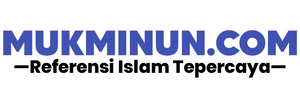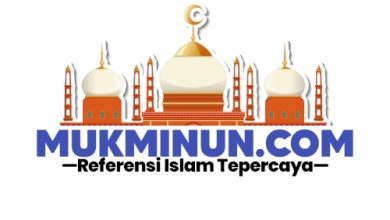Uncategorized
Criteria for the Evaluation of the Website (From Jing Jiang’s Thesis)
By Irfan Nugroho
Taylor, Kent and White’s (2001) article on activist organizations’ websites also provided the main criteria for evaluation used in this study: the principles of ease of interface, usefulness of information, and encouragement of return visits.
1. Ease of Interface
Ease of interface relates to the fact that site visitors should have an easy time navigating and finding information. As Taylor, Kent and White (2001) proposed, “ease of interface is a prerequisite for Webbed dialogue”(p.269). Site maps, major links to rest of site, search engine box, and low reliance on graphic are four major features that facilitate this principle.
2. Usefulness of Information
Taylor, Kent, and White (2001) identified that the usefulness of information on a website is necessary for dialogic relationship building, because “home pages often target a variety of publics and attempt to provide information of interest to each group targeted”(p.269). Thus, statement of philosophy/mission, details of how to become affiliated, links to political leaders, and prominence of organization logo are going to be evaluated in this specific study.
3. Return Visits
Return visits reflects the interaction between organizations and the public. As Taylor, Kent, and White (2001) stated, “relationships are not established in one-contact communication interactions. Relationship building requires time, trust, and a variety of other relational maintenance strategies that can only occur over repeated interactions” (p.270). Thus how to encourage site visitors to return becomes vital to banks. This principle includes explicit statement invites user to return, news forum, FAQ’s, calendar of events, downloadable information, things that can be requested by mail/e-mail.
4. Visual Reflection (Addition)
a. Color
Color arouses the first-sight attention from the public and plays a very important role in webpage design, especially in representing and reflecting cultural differences. Colors have different connotations. As Ning and Bone (1995) identified, color was not a mere aesthetic tool but an all-important aspect of Chinese culture. The “developments occurred within China’s culture, which had been in existence for more than five thousand years, and led to the unique concepts of color held by the Chinese of the past” (Ning & Bone, 1995, p.160). For instance, white means death, red symbolizes happiness and luck, green means refreshment and activeness, and blue means stability and sophistication, and so forth.
b. Photo
In addition to color, photographs have become one of the favorite choices for any webpage designer. As personal computers develop technical sophistication, more photos and graphics are being posted by organizations. Moreover, like the influences resulted from color, the use of photos is a cultural reflection. In Chinese tradition, photos have implications. For instance, an office building usually symbolizes power and authority; a family photo implies harmony; a baby photo implies the hope of life, and so forth.
c. Logo Identification
Logo identification becomes important in this study because it is a symbol of an organization. A logo can provide visitors with an understanding of the organization when they are designed effectively. And spontaneously, the public will associate their personal need with the image the organization set through the logo identification. Meanwhile, logo identification may be viewed as a cultural reflection as well. In order to avoid possible damage resulting from cultural differences, a successful business organization should adjust or even design a new logo for this new market that is quite different from its home culture.
1. Color
2. Layout
3. Link Arrangement
4. Navigation
5. Language Issue
Measure for Success of Cyberspace
So how do you measure the effectiveness of your web PR efforts? Essentially the same way you’d measure any other marketing efforts. The first, and most difficult, question each Internet marketer needs to ask is: What do you hope to accomplish with your web efforts?
There are three major categories of purpose, though, knowing the web, I’m sure someone will come up with a dozen more before the month is out.
1. Proactive Publicity
Almost all organizations today include “the Internet” as an audience, or category of publicity. Recent statistics indicate that consumers are increasingly turning to the Internet first for information on purchases, life choices and news. A proactive PR campaign today must include a web presence, recognizing that it requires a different type of activity and has a completely different set of editors, smart organizations dedicate a Web-savvy individual(s) to ensuring that news of their company or organization appears in the major e-zines, listings, and link lists.
2. Reactive Crisis Management
Just as consumers are increasingly turning to the web for information, so too are journalists, particularly when they are following a crisis. In response, most savvy organizations have developed “crisis communications” web sites that they can turn on when necessary. These sites contain contact information and background data and thus become a place for journalists to get the most up-to-date data.
3. Relationship Building
The biggest difference between the Web and traditional media is its interactive nature. Thus it becomes a perfect medium for building relationships with your publics. In chat rooms and on web sites, around the world or in your neighborhood, dialog is occurring daily, even hourly, with constituencies, customers and prospects, and as well as enemies. The goals of all those dialogs are the most basic of public relations objectives: to educate, convince, win over, make aware and persuade.
WHAT KIND OF RULERS DO YOU NEED IN CYBERSPACE?
1. A tool to find out what the cyber media is writing about you and what your constituencies are seeing about you (and your competition) è Clipping Service
2. A tool to find out the size of the impact you are having
How many people visit your web (Hits). Weekly counting is better than monthly counting of website’s visitors. However, do not compare internet counting to printed or broadcast media.
3. A tool to find out what your constituencies are saying about you
Once you’ve gathered the postings, your next challenge is to analyze them to determine what they are actually saying. Studies have shown that typically people go online to chat about news that they’ve heard one to two weeks after an announcement, so if you’re measuring a specific event, you need to monitor chat rooms for at least a month after the event. You should analyze the discussion content for tone, positioning and messages, just as you would your print or broadcast media coverage. The one problem that technology has yet to tell us is how many people are viewing each discussion group posting. For now, you can only monitor the actual number of postings, not their total impact.
4. A tool to determine what your constituencies think about you
The Internet has made it possible to get instant feedback from your constituencies, and there are now dozens of companies that offer web-based surveying tools.
5. A tool to determine what action, if any, your constituencies are taking
Behavioral change is both the loftiest goal and the hardest to measure.
6. A tool to determine whether it’s all worth it
At some point, you need to put all of the above measures to the ultimate test – does it help the business or ultimate goals of your organization? This involves factoring in the costs for the results. You need to track criteria such as “Marketing or PR cost per new customer acquired,” or “Cost per minute spent with prospect,” to help you determine what is or is not working. You can also compare the costs of on-line PR with other Internet traffic generators, such as banner ads and sponsored placements, to determine a relative value for your on-line PR efforts.

